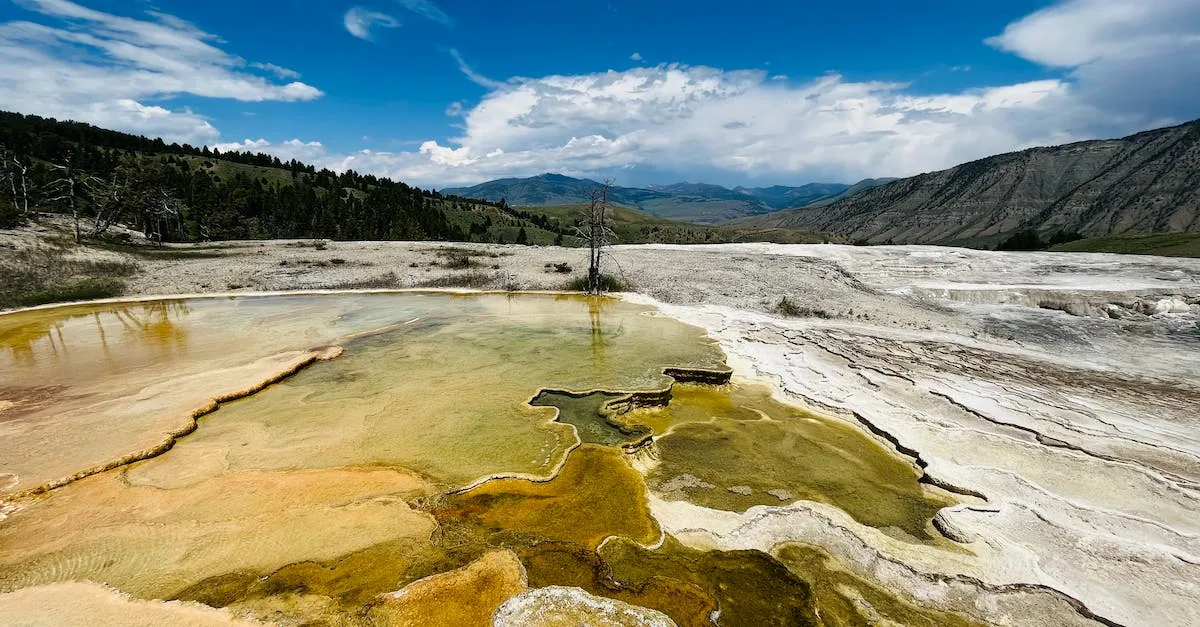Why Is Florida So Hot? An In-Depth Look At The Sunshine State’S Sweltering Weather
With its sunny beaches, palm trees, and sweat-drenched tourists, Florida is infamous for its hot and humid weather. For much of the year, temperatures in the Sunshine State reach scorching highs, making simple activities like walking outside feel unbearable.
If you’re short on time, here’s a quick answer to your question: Florida is so hot due to its subtropical climate, proximity to the equator, and surrounding warm waters, which all combine to bring lots of heat and moisture. The state’s flat terrain and urban heat island effects also contribute to the high temperatures.
In this comprehensive guide, we’ll explore the many factors that turn Florida into a veritable sauna for much of the year. You’ll learn how Florida’s latitude and subtropical climate create the perfect hot and humid environment. We’ll also dive into how the state’s topography, urbanization, and surrounding warm waters of the Atlantic Ocean and Gulf of Mexico act as heating elements. Let’s unpack all the reasons why Florida is so scorching.
Florida’s Subtropical Climate
Florida is known for its sweltering weather and tropical vibes, thanks to its subtropical climate. This unique climate is a result of its geographical location and various climatic factors. Let’s delve deeper into why Florida is so hot!
High Humidity
One of the main contributors to Florida’s heat is its high humidity levels. The state’s proximity to large bodies of water, including the Atlantic Ocean and the Gulf of Mexico, leads to increased moisture in the air.
When combined with the warm temperatures, this high humidity can make the weather feel even hotter. It’s no wonder that Floridians often joke about feeling like they’re swimming through the air!
Lots of Sunshine
As the name suggests, Florida is the Sunshine State, and for good reason. With an average of 230 sunny days per year, the state receives an abundance of sunlight. This constant sunshine contributes to the high temperatures experienced throughout the year.
The sun’s rays heat up the land and water, creating a warm environment that is perfect for outdoor activities and beach days.
Warm Winds
Florida experiences warm winds called trade winds, which blow predominantly from the east. These winds bring in warm air from the subtropical regions, contributing to the overall heat in the state. The warm winds, combined with the high humidity and ample sunshine, create a perfect storm for hot and balmy weather.
Proximity to the Equator
One of the main reasons why Florida is so hot is its proximity to the equator. The state is located in the southeastern part of the United States, which means it is much closer to the equator compared to other states. As a result, Florida receives a high amount of direct sunlight throughout the year.
Direct Sun Exposure
Florida’s location near the equator means that it is exposed to the sun’s rays more directly than other states. This direct exposure leads to higher temperatures and a more intense heat. The angle at which the sun’s rays hit the earth in Florida allows for a greater amount of energy to be absorbed, resulting in hotter weather.
The abundance of sunshine in Florida also contributes to its nickname as the “Sunshine State.” With an average of over 230 sunny days per year, Floridians definitely get their fair share of vitamin D.
According to Current Results, cities like Miami and Tampa receive an average of 250 days of sunshine per year, making them some of the sunniest cities in the United States.
Minimal Seasonal Temperature Fluctuation
Another factor that contributes to the hot weather in Florida is the minimal seasonal temperature fluctuation. Unlike other states that experience distinct seasons with varying temperatures, Florida’s climate remains relatively warm throughout the year.
The state’s proximity to warm ocean currents, such as the Gulf Stream, helps to moderate its temperatures, preventing extreme cold or hot spells. This consistent warmth, combined with the direct sun exposure, creates a climate that is consistently hot, especially during the summer months.
In fact, Florida’s average high temperatures during the summer can reach the high 80s to low 90s Fahrenheit (around 31-33 degrees Celsius) with high humidity levels, making it a popular destination for beachgoers and sun-lovers.
So, if you’re planning a trip to Florida, be prepared for the heat and make sure to pack your sunscreen!
Effects of Surrounding Warm Waters
One of the key factors contributing to the sweltering weather in Florida is the presence of warm waters surrounding the state. The Gulf of Mexico and the Atlantic Ocean play a significant role in influencing the climate of the Sunshine State.
Gulf of Mexico
The warm waters of the Gulf of Mexico act as a heat source for Florida’s weather. The Gulf Stream, a powerful warm current, flows from the Gulf of Mexico into the Atlantic Ocean, carrying with it heat energy.
As the warm air rises from the water surface, it creates a low-pressure system that draws in moist air from the surrounding areas. This moisture-laden air then moves inland, resulting in the humid conditions that Florida is known for.
The Gulf of Mexico also contributes to the formation of tropical storms and hurricanes. Warmer waters provide the necessary fuel for these weather systems to develop and intensify. Florida’s location on the Gulf Coast makes it particularly susceptible to the impacts of these tropical disturbances.
Atlantic Ocean
The Atlantic Ocean, especially the warm waters of the Gulf Stream, also influences Florida’s climate. The Gulf Stream flows along the state’s eastern coastline, bringing warm water and heat energy. This warm water acts as a source of moisture and heat, contributing to the high humidity and temperatures experienced in the region.
In addition, the proximity to the Atlantic Ocean makes Florida prone to the formation of tropical cyclones. The warm waters provide the necessary energy for hurricanes to develop and strengthen as they move across the ocean.
When these storms make landfall, they can bring heavy rain, strong winds, and storm surges, further adding to the extreme weather conditions.
Heat Energy Radiating Inland
Another effect of the surrounding warm waters is the heat energy that radiates inland. As the warm air rises from the ocean surface, it creates a low-pressure system that draws in air from the surrounding areas. This air then moves inland, carrying the heat energy with it.
This process contributes to the overall hot and humid climate experienced in Florida.
The combination of the Gulf of Mexico and the Atlantic Ocean acting as heat sources, along with the heat energy radiating inland, creates the perfect conditions for Florida’s hot weather. It is important to note that these factors can vary throughout the year and can be influenced by other weather patterns and atmospheric conditions.
Florida’s Flat Terrain
One of the reasons why Florida experiences such hot weather is its flat terrain. Unlike mountainous regions that benefit from cooler temperatures due to higher elevation, Florida’s lack of elevation or slope contributes to its sweltering climate.
Lack of Elevation or Slope
Florida is known for its relatively low elevation, with the highest point in the state reaching just 345 feet above sea level. This lack of elevation means that there are no natural barriers to block or redirect warm air masses.
As a result, the state is more susceptible to the direct impact of the sun’s rays, leading to higher temperatures.
Did you know? The highest point in Florida is Britton Hill, located in the Panhandle region. Despite its modest height, it still offers a great view of the surrounding flat landscapes.
Poor Air Circulation
In addition to the lack of elevation, Florida’s flat terrain also hinders proper air circulation. Without mountains or hills to create air currents, the state experiences limited airflow, which can contribute to the build-up of heat and humidity.
This stagnant air can make the temperatures feel even hotter, especially during the summer months.
Furthermore, the absence of significant changes in elevation results in less mixing of air masses. This lack of air movement prevents cooler air from higher altitudes to descend and replace the warm air at ground level, exacerbating the hot weather conditions in Florida.
Expert tip: To beat the heat in Florida, it’s advisable to stay indoors during the hottest parts of the day, hydrate regularly, and take advantage of air conditioning or shade when available.
For more information on Florida’s climate and weather patterns, you can visit the National Weather Service – Miami/South Florida website.
Urban Heat Islands
One of the contributing factors to Florida’s hot weather is the phenomenon known as urban heat islands. Urban areas, such as cities, tend to be significantly warmer than the surrounding rural areas due to various factors.
Vast Amounts of Concrete
In Florida’s urban areas, there is a vast amount of concrete in the form of buildings, roads, and sidewalks. Concrete is known to absorb and retain heat, leading to higher temperatures in these areas. The concrete surfaces radiate the absorbed heat back into the surrounding environment, creating a heat island effect.
The extensive use of concrete not only contributes to the higher temperatures but also affects the overall climate. The lack of vegetation and green spaces in urban areas reduces the cooling effect provided by plants through evapotranspiration, further exacerbating the heat island effect.
Excess Heat from Vehicles and Buildings
Another factor that contributes to Florida’s sweltering weather is the excess heat produced by vehicles and buildings. The high population density and heavy traffic in urban areas result in a significant amount of heat being released into the atmosphere.
Vehicles emit heat through their engines and exhaust systems, while buildings release heat from air conditioning systems, appliances, and human activities. This excess heat accumulates in urban areas, leading to higher temperatures compared to the surrounding rural regions.
Studies have shown that urban heat islands can result in temperature differences of several degrees between urban and rural areas. This temperature disparity can have various implications, including increased energy consumption for cooling, reduced air quality, and potential health risks for vulnerable populations.
Efforts are being made to mitigate the urban heat island effect in Florida and other urban areas. These include the implementation of green infrastructure, such as urban parks and rooftop gardens, which help to cool the environment through shading and evapotranspiration.
Additionally, the use of reflective materials for buildings and pavement can help reduce heat absorption and minimize the heat island effect.
To learn more about urban heat islands and their impact on urban areas, you can visit the website of the U.S. Environmental Protection Agency.
Conclusion
With its subtropical climate, low latitude, flat terrain, surrounding warm waters, and urban heat islands, it’s easy to see why Florida experiences such persistently hot weather. The state is prone to plenty of sun, humidity, and rising temperatures through much of the year.
The next time you find yourself sweating through your clothes after five minutes outdoors in Florida, you’ll understand exactly why. The Sunshine State fully lives up to its name when it comes to scorching heat and mugginess.








